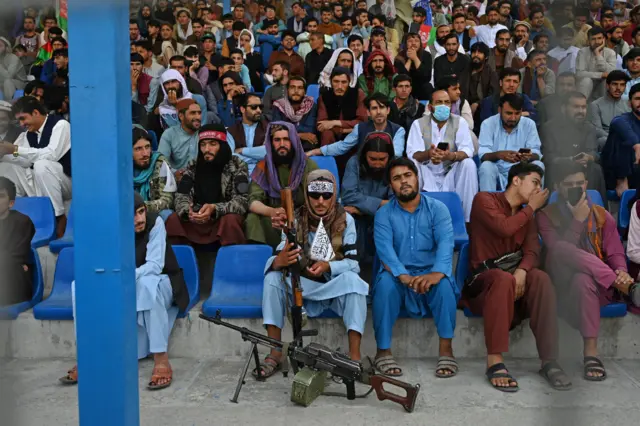The story of Afghanistan’s 'undefeated' valleypublished at 07:29 BST 6 September 2021

As we've been reporting, there have been competing claims as resistance fighters deny the Taliban's claims that its fighters have seized Panjshir. Here's what you need to know about the area.
Panjshir, a rugged mountain valley, is home to between 150,000 and 200,000 people. It was a centre of resistance when Afghanistan was under Soviet occupation in the 1980s and during the Taliban's previous period of rule, between 1996 and 2001.
The long, deep and dusty valley stretches about 75 miles (120km) - south-west to north-east - to the north of the Afghan capital Kabul. It is protected by high mountain peaks - rising 9,800ft (3,000m) above the valley floor. They are an imposing natural barrier - protection for the people living there.
There is only one narrow road in, which winds its way between large rocky outcrops and the meandering Panjshir River.
"There is a mythical aspect to the entire area. It's not just one valley. Once you get into it there are at least another 21 sub valleys connected," says Shakib Sharifi, who lived there as a child, but left Afghanistan after the Taliban took control.
At the far end of the main valley, a trail leads up to the 4,430m (14,534ft) Anjoman Pass and heads further east into the Hindu Kush mountains. The armies of Alexander the Great and Tamerlane - the last of the great nomadic conquerors of Central Asia - both passed this way.
You can read more about the valley here.










